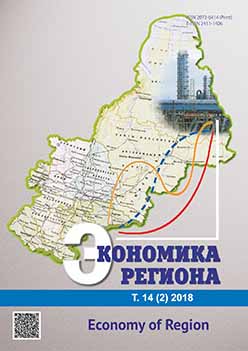Основные тренды миграционной мобильности населения регионов Сибирского и Дальневосточного федеральных округов
Main Directions of Migration Mobility in the Siberian and Far Eastern Federal Districts
Author(s): Kseniya Vladimirovna Shvorina, Larisa Mikhaylovna FaleychikSubject(s): Economy, Geography, Regional studies
Published by: Институт экономики Уральского отделения Российской академии наук
Keywords: population mobility; interregional migration; regions of the Siberian and Far Eastern Federal Districts; native inhabitants of the territory; settled population; migration factors; migration geography
Summary/Abstract: The article considers the migration mobility in the regions of Eastern Siberia and Russian Far East. The purpose of the study is to analyze and characterize the migration mobility of the population of the Siberian Federal District (SFD) and the Far Eastern Federal District (EFD) as well as to identify the interregional migration factors that determine the geography of its directions. The main hypothesis of the study is that interregional differences in the social and economic development of regions play a primary role in the formation of the repulsive and attractive factors of migration. We used statistical analysis and mathematical methods, as well as their geographical visualization. We have analyzed data from the Rosstat databases and have shown that migration losses in the SFD regions are significantly higher than in FEFD. However, for FEFD, these losses are more significant. Therefore, poorly populated and depressive regions deserve special attention. In these regions, even minimal migration losses considerably increase socio-demographic risks. We revealed that the indigenous population prevail in these territories. At the same time, the increasing territorial mobility of native inhabitants is observed. In most of the regions, there is a low migrant’s adaptation level. We have proposed the authors’ approach to the study of migration repulsive and attractive factors. It is based on the integration of the methods of multidimensional cluster analysis and geo-information analysis. This approach has allowed to classify the Russian regions in terms of their migration attractiveness as well as to show the geography of the prevailing migration movements for each region of SFD and FEFD. The results of the study have confirmed the dependence of migration mobility on the quality of life in different regions. These data may be applied to elaborate mechanisms for an effective policy of regional socio-economic development in the country. The promising direction for the further research is the application of our method at the municipal level. It may allow structuring regional economic spaces depending on the growth poles and the periphery.
Journal: Экономика региона
- Issue Year: 14/2018
- Issue No: 2
- Page Range: 485-501
- Page Count: 17
- Language: Russian

